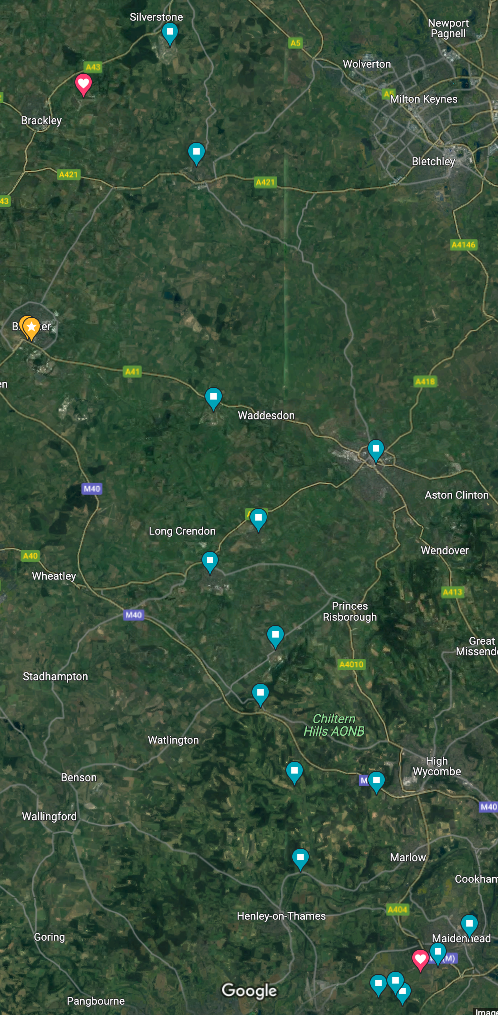Published: 4 Sep 2023
Last Edit: 23 Sep 2023
Let me set the scene: I was on a brief but life-changing 10-hour training package in the tranquil airfields of White Waltham, UK. It was Thursday, the day before our last day in here, and I still had 2.6 hours left.
Dean the chief flying instructor who bears a striking resemblance to Dwight from The Office, posed a question that caught me off guard. “What’s your purpose in this journey?”. It took me a moment to respond. It wasn’t that I hadn’t considered this question before, it was more about confirming whether my purpose had evolved during my time here. In that brief, tense pause, i replied “To confirm my passion for flying”
What happened next was nothing short of magical. Dean proposed a regional navigation flight from White Waltham (EGLM) to Turweston (EGBT) and back, a journey promised roughly two hours of airborne excitement. I was over the moon about this unexpected twist. At this stage of my training, I should’ve been mastering basic flying skills and manoeuvres in the circuit. But here I was, embarking on a real adventure in the sky.

Eager to prepare for the flight, I asked Dean what I should do. His response was both simple and profound: “No need to prepare, just enjoy the ride.”
With Dean’s wisdom still echoing in my ears, I couldn’t help but did wee bit of prep, leading me to turn to Calvin, the grandmaster of Hong Kong Flight Training Centre (HKFTC). Calvin graciously took the time to guide me through every crucial landmarks along the route essential for navigation accuracy and safety.
The next morning, I was set to fly with Dean, but a last-minute shuffle had me under Neil’s guidance instead, on G-BZDA (G-DA, Golf Delta Alpha)
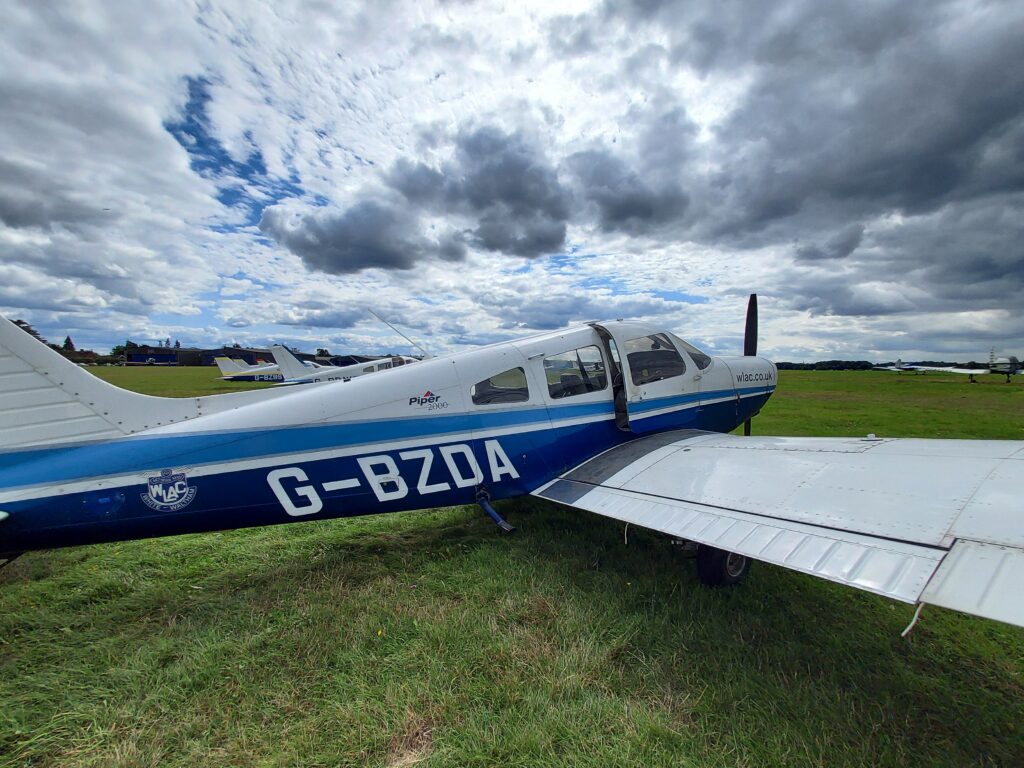
As I walked into the instructor room to greet Neil. He asked me about the plan, and I mentioned the original idea of flying to Turweston and back. But I also added, “If you have something else in mind, I’m up for it.” Neil decided to stick with the original plan.
Neil then guided me through the meticulous process of flight planning. From checking the weather forecast, NOTAMs, destination information, route planning, plotting courses on the chart, flight time calculations, and fuel requirements – it was an intricate dance of data and precision. As a noob in flight planning, I soaked up every detail Neil shared, eager to someday navigate the skies like a pro, with you on Cody Pacific.

DA posed an extra challenge cos we got a malfunction heading indicator/directional indicator (DI), leaving us with only the good old magnet compass for direction. For those who aren’t aviation experts, you might wonder why this is a big deal.
We often need to make precise changes in our heading to follow our planned flight path or to navigate around weather or other aircrafts. Normally, pilots rely on the DI to execute these precise manoeuvres effortlessly.
When you have a functional DI, this process is fairly straightforward. You just anticipate the roll-out before hitting the desired heading. But when your DI decides to take a break, that’s when things get interesting.
Introducing timed turns. In a standard rate turn, we’re making a 3-degree change per second. For example, transit from a heading from 320º to 302º, you’d need an 18º turn, which, divided by 3º, meaning you simply count 6 seconds to turn to a new heading. Easy eh?
For me, that malfunctioning DI was deffo a reminder of why it was invented in the first place. If you’re curious about magnetic compass errors, check out this video (starts at 2:34)
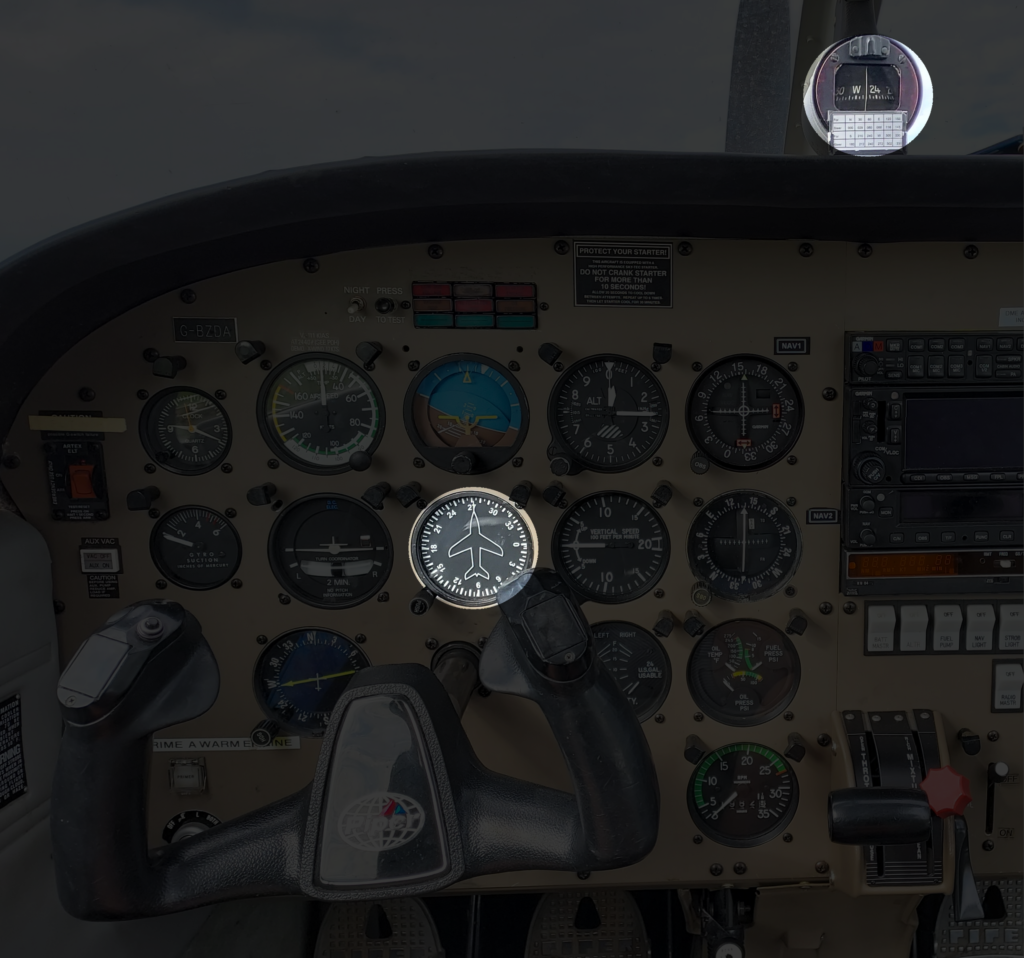
Prior Permission is required (PPR) to land at Turweston Aerodrome. Neil made the necessary arrangements before we headed out for fuel check and refuelling.
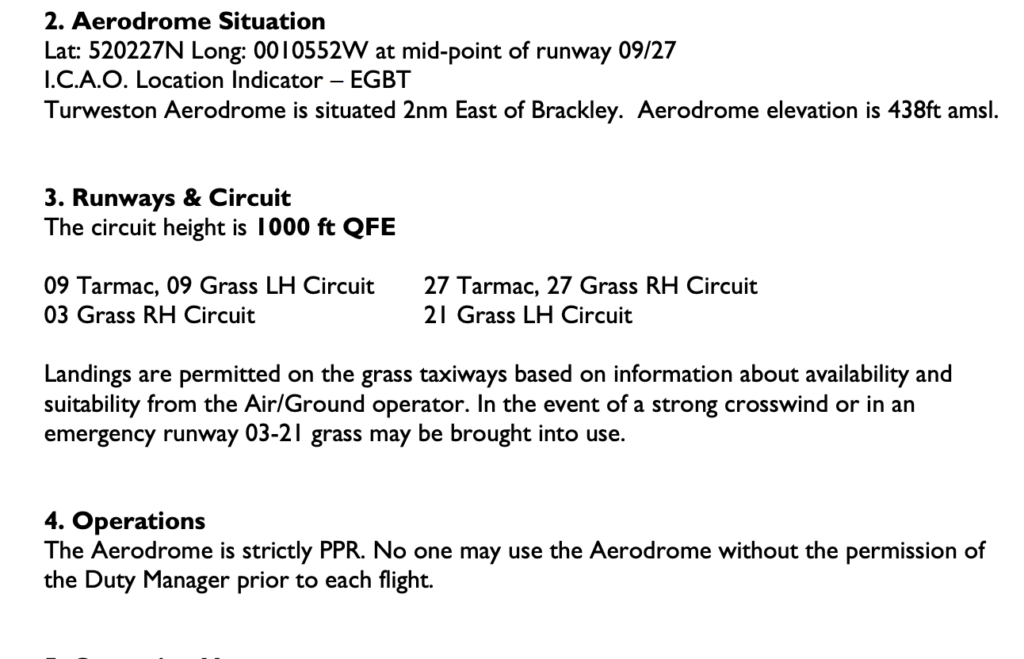
After refuelling, Neil’s simple command, “Take me to Turweston,” A surge of excitement and responsibility welled up within me as I couldn’t help but respond with an ear-to-ear grin. Soon we got on, he covered the spinning DI with a postit to eliminate distraction.
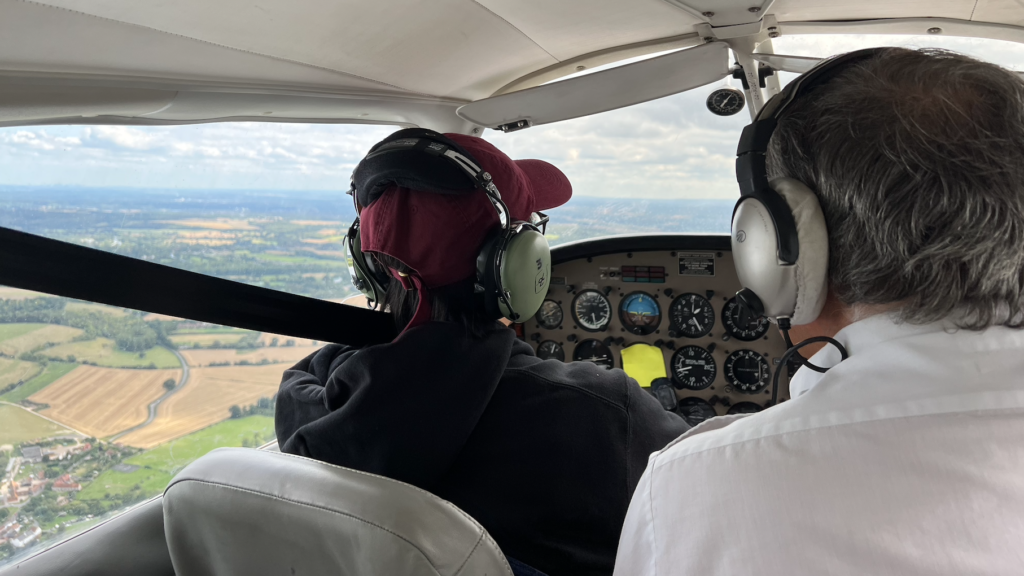
As we took off and left our familiar training area behind, the true scope of our responsibilities as pilots became strikingly apparent. Navigating from one point to another required meticulous planning AND execution.
Remember timed turns? They seemed deceptively simple when discussed on ground, but up in the sky, I struggled even with basic math ngl. Also, my turns might not always adhered to the ‘standard rate,’ so requiring minor adjustments here and there. Surprisingly tho these challenges brought me immense joy in learning & applying a new skill.
To my astonishment, we reached our predetermined checkpoints and destination precisely on schedule.
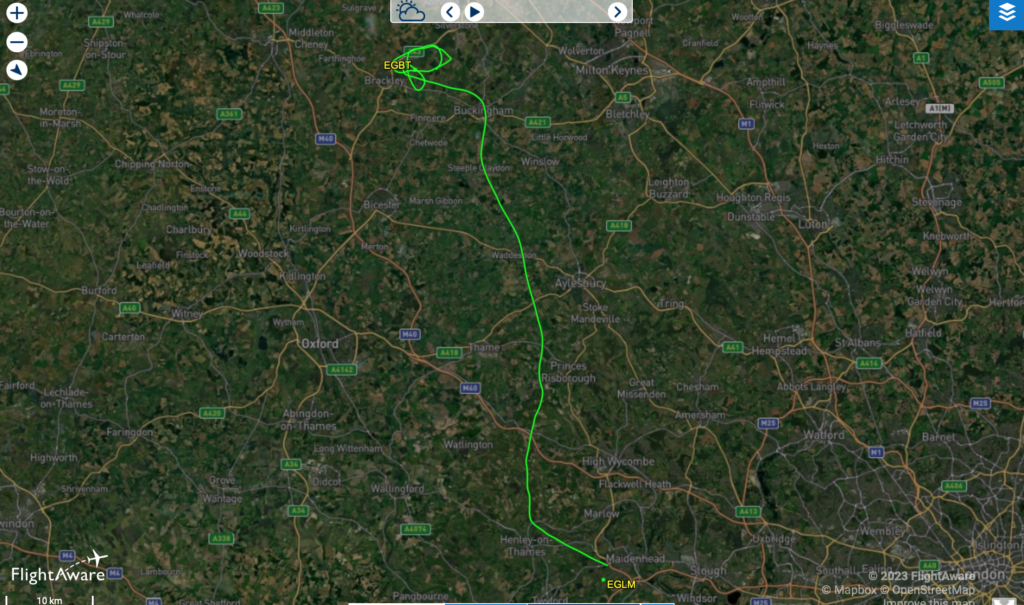
We then made our way to the control centre to pay the landing fee of £18. And I couldn’t resist taking the receipt as a memento. I later framed it and hung it in my apartment, a constant reminder of this defining chapter in my aviation journey.

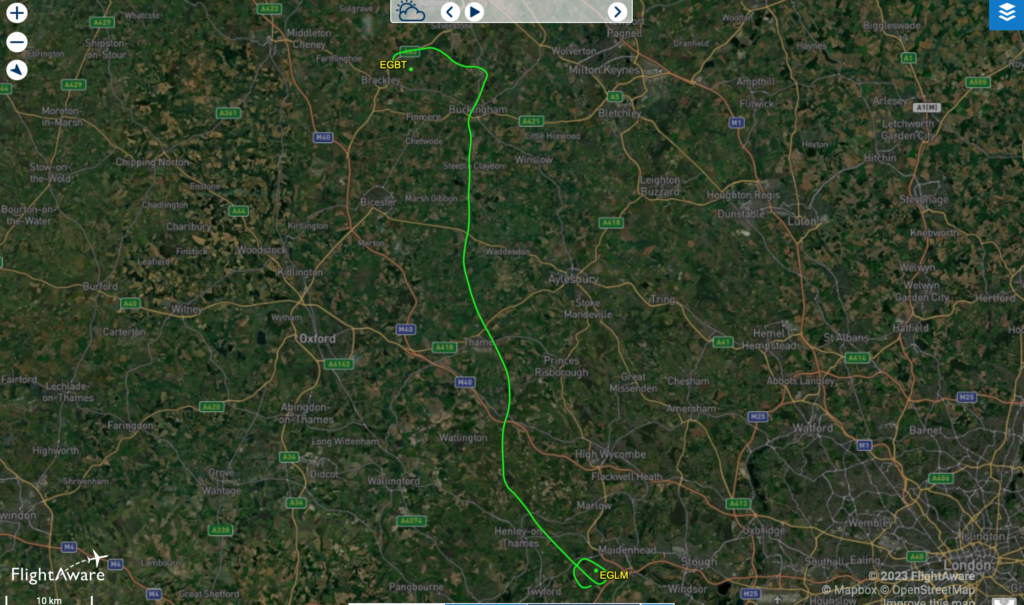
This regional flight was an eye-opening experience. It showed me the beauty of flying from one location to another and the intricate work that goes into it. While aerobatics had its appeal, this adventure added a new layer of fulfilment and accomplishment to my flying aspirations. My passion for flying had been confirmed, and the skies had just become a bit more inviting.
◃ Back
